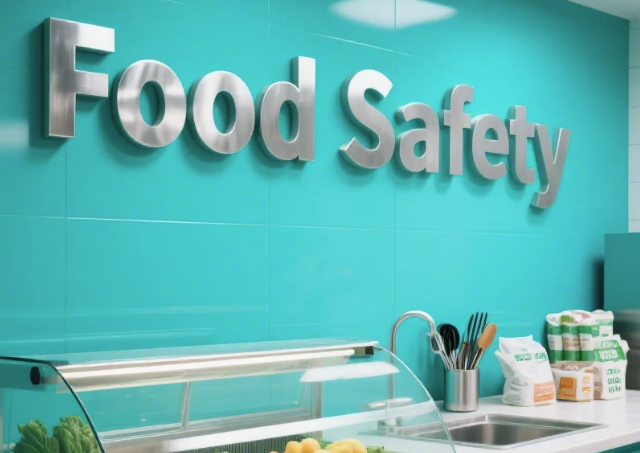Introduction: The Debate on AI in Food Safety

Food safety is a critical concern for both consumers and producers, and maintaining quality assurance is paramount. With the rise of AI tools, the food industry is witnessing a transformative shift in how safety and quality are managed. These tools promise to enhance monitoring, streamline processes, and ensure compliance.
But here’s the controversial question: Are AI tools genuinely revolutionizing food safety, or are they simply adding another layer of complexity to an already intricate system? In this review, we’ll explore the best AI tools currently being used in food safety, their features, and whether they truly help maintain quality assurance or just complicate matters further.
Why Food Safety Needs AI Tools
The complexity of food safety management requires innovative solutions to address challenges effectively. AI tools are designed to assist by:
Enhancing data analysis: AI can process large volumes of data from various sources to detect potential safety risks.
Improving efficiency: AI can automate routine inspections and monitoring tasks, allowing for more focused oversight.
Ensuring compliance: AI can track regulatory changes and ensure processes are aligned with current standards.
But do these tools really deliver on their promises? Let’s dive into the top tools and see how they stack up.
Top AI Tools for Food Safety
Here’s a rundown of some of the top AI tools transforming food safety:
1. IBM Food Trust
Why it’s great: IBM Food Trust uses blockchain and AI to enhance traceability and transparency in the food supply chain.
Key features:
AI-driven data analysis for traceability
Blockchain integration for secure data sharing
Real-time monitoring of supply chain activities
Pros:
Enhances traceability and transparency
Reduces the risk of food fraud and contamination
Cons:
Requires industry-wide adoption for maximum effectiveness
Initial setup and integration can be complex
2. Clear Labs
Why it’s great: Clear Labs uses AI and genomics to identify pathogens and contaminants in food products.
Key features:
AI-driven genomic sequencing for pathogen detection
Automated reporting and risk assessment
Integration with existing food safety protocols
Pros:
Provides rapid and accurate pathogen identification
Supports proactive risk management
Cons:
Limited to specific types of contaminants
Requires specialized equipment and expertise
3. ImpactVision
Why it’s great: ImpactVision employs AI to analyze food quality through hyperspectral imaging technology.
Key features:
AI-driven hyperspectral imaging for quality assessment
Real-time analysis of food freshness and composition
Integration with production line monitoring systems
Pros:
Offers precise quality assessment without contact
Enhances efficiency in quality control processes
Cons:
Initial investment in imaging technology can be high
Requires training for accurate interpretation of results
4. Ripe.io
Why it’s great: Ripe.io uses AI and blockchain to monitor and verify food quality and sustainability.
Key features:
AI-driven monitoring of food quality metrics
Blockchain integration for transparency and verification
Real-time data analysis for sustainability tracking
Pros:
Enhances sustainability and quality assurance
Provides detailed insights into food production processes
Cons:
Requires collaboration across the supply chain
Data accuracy depends on input quality
Pros and Cons of Using AI Tools in Food Safety
While these tools offer significant advantages, they also face some challenges. Let’s break it down:
Pros:
Enhanced data analysis: AI tools provide deep insights from complex data sets, revealing safety risks and quality issues.
Improved efficiency: Automation reduces the need for manual inspections, allowing for more streamlined operations.
Ensured compliance: AI helps track regulatory changes and ensures processes meet current standards.
Cons:
Technological limitations: Current AI and sensor technology can limit the effectiveness of these tools.
Data dependency: AI tools rely heavily on the quality and quantity of data available.
Complexity: Integration and interpretation of AI-generated results can be challenging and require expert analysis.
FAQs: Common Questions About Food Safety AI Tools
Q: Can AI tools replace human inspectors in food safety?
A: While AI tools enhance data analysis and efficiency, they cannot replace the expertise and judgment of human inspectors. They are designed to support and augment human efforts, not replace them.
Q: Are these tools suitable for all types of food safety concerns?
A: Many tools like IBM Food Trust and Clear Labs are tailored for specific safety concerns, but adaptability varies.
Q: Do AI tools guarantee better food safety outcomes?
A: AI tools significantly enhance the potential for effective food safety management, but outcomes also depend on how well these tools are integrated and used within broader safety strategies.
Conclusion: Are AI Tools the Future of Food Safety?

AI tools like IBM Food Trust, Clear Labs, ImpactVision, and Ripe.io are undeniably transforming food safety management. They offer enhanced data analysis, improved efficiency, and ensured compliance, making it easier to maintain quality assurance.
See More Content about AI tools
